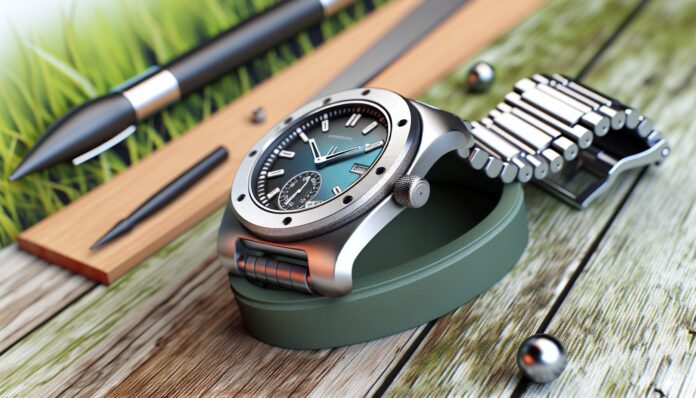Apple has quietly taken a bold step into the world of additive manufacturing, using 3D printing to produce the titanium cases for select models of the Apple Watch Ultra. This move marks a significant shift in how high-end consumer electronics can be manufactured, blending cutting-edge technology with Apple’s signature design ethos.
Apple’s 3D Printing Breakthrough in Watch Manufacturing
In 2023, Apple began using 3D printing to manufacture the titanium cases for some of its Apple Watch Ultra models. This was first reported by Bloomberg and later confirmed by teardown experts and industry insiders. The company employed a technique known as binder jetting, a form of additive manufacturing that builds parts layer by layer using a powdered material and a binding agent.
Unlike traditional subtractive manufacturing, where material is cut away from a solid block, binder jetting allows for more efficient use of raw materials and can reduce waste significantly. For Apple, this means not only a more sustainable production process but also the ability to iterate designs more quickly and with greater precision.
How Binder Jetting Works in Apple’s Production
Binder jetting involves spreading a thin layer of metal powder—titanium, in this case—across a build platform. A print head then selectively deposits a binding agent to form the shape of the part. This process is repeated layer by layer until the full part is formed. The resulting ‘green’ part is then sintered in a furnace, where the binder is burned off and the metal particles fuse together to form a solid, dense object.
Apple’s use of this technology is particularly notable because titanium is a challenging material to work with. It’s strong, lightweight, and corrosion-resistant, making it ideal for wearable devices, but it’s also expensive and difficult to machine. By using binder jetting, Apple can produce complex geometries that would be difficult or impossible to achieve with traditional methods, all while minimizing material waste.
Design and Engineering Challenges
According to a detailed analysis by Hodinkee, Apple’s 3D-printed watch cases are virtually indistinguishable from their traditionally manufactured counterparts. The company has managed to maintain its high standards for surface finish, dimensional accuracy, and durability. This is no small feat, as 3D-printed metal parts often require extensive post-processing to meet such standards.
Apple’s engineering team likely invested significant resources into refining the sintering process and post-processing techniques to ensure the final product meets its rigorous quality control benchmarks. The result is a watch case that not only looks and feels premium but also benefits from the efficiencies of additive manufacturing.
Implications for the Future of Consumer Electronics
Apple’s foray into 3D printing could have far-reaching implications for the consumer electronics industry. If the company continues to expand its use of additive manufacturing, it could lead to faster product development cycles, more customizable products, and a reduced environmental footprint.
Moreover, Apple’s adoption of binder jetting could help legitimize the technology in the eyes of other manufacturers. While 3D printing has been widely used in aerospace, automotive, and medical industries, its use in consumer electronics has been limited. Apple’s success could pave the way for broader adoption across the sector.
It’s also worth noting that Apple’s move aligns with its broader sustainability goals. The company has committed to becoming carbon neutral across its entire supply chain by 2030, and additive manufacturing could play a key role in achieving that target by reducing material waste and energy consumption.
What’s Next for Apple and 3D Printing?
While Apple has not officially confirmed the extent of its 3D printing operations, industry analysts believe this is just the beginning. Future Apple Watch models—and potentially other product lines—could increasingly rely on additive manufacturing. This would allow Apple to further streamline its supply chain, reduce costs, and offer new levels of product customization.
As the technology matures and becomes more cost-effective, we may see 3D printing become a standard part of Apple’s manufacturing toolkit. For now, the Apple Watch Ultra serves as a compelling case study in how additive manufacturing can be used to produce high-quality, mass-market consumer electronics.
Source: Hodinkee

